Colder, shorter winter days limit the time (most) sailors get to spend on the water. The good news is that wintertime also offers us the opportunity to enjoy the books that gathered dust during the balmy summer season.
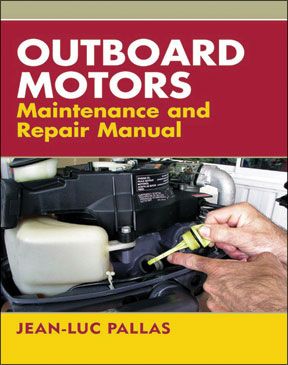
217
From gut-wrenching novels to technical manuals, lessons in boatie Spanish, a sailor’s cookbook, and a new twist on an old classic—here are a few we’ve plucked from the Practical Sailor library to help get us through the winter.
Marine Diesel Engines, Outboard Motors
Winter is a good time to carry out that much-needed check up on your diesel and outboard engines. Author Jean-Luc Pallas’ “Marine Diesel Engines: Maintenance and Repair Manual” and “Outboard Motors: Maintenance and Repair Manual” offer several hundred pages of detailed diagrams, color photos, and step-by-step instructions on the care and feeding of cooling, electrical, and propulsion systems.
There are sections on the many different types of engine parts and their functions, maintenance, propulsion and fuel, along with troubleshooting and repair. Pallas, a professor of Recreational Marine Mechanics at La Rochelle Technical College in France, penned the books as enjoyable, informative textbooks for Engines 101. Boat-owners interested in trouble-shooting engine problems or doing DIY engine maintenance should consider adding these guides to their library. (2006,
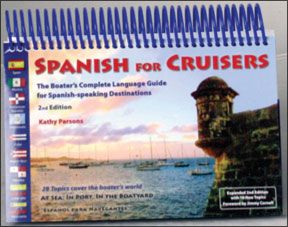
288
Sheridan House Inc., www.sheridanhouse.com, Outboard Motors, 2006, $24; Marine Diesel Engines, $35)
The Complete Anchoring Handbook
While you’re sitting still this winter, why not study the art of staying put? “The Complete Anchoring Handbook, Stay Put on Any Bottom in Any Weather,” written by Alain Poiraud, Achim Ginsberg-Klemmt, and Erika Ginsberg-Klemmt, examines all anchor-related issues, from the various types of seabeds to the multiple forces applied to an anchor. Despite being co-authored by Spade Anchor-maker Poiraud, the book’s in-depth look at anchor anatomies and the science behind each is even-handed and objective. The authors dissect many of the traditional anchors, including the Fisherman, CQR, and Danforth, and describe the roll-stable new-
generation anchors such as the claw anchors, new plow designs, concave-fluke anchors, and roll-bar anchors. There are informative sections on deck equipment, layout, and anchor rode (including an appendix theoretical study in rode behavior), and more than 50 pages on anchoring techniques. Filled with an array of information and tips, this book would benefit cruisers dealing with varying bottoms or new boaters looking to learn about anchoring. (2008, International Marine McGraw-Hill Companies, $20, www.internationalmarine.com.)
Spanish for Cruisers

189
The second edition of Kathy Parson’s “Spanish for Cruisers” includes 10 new topics requested by readers of the first edition. It covers language and vocabulary helpful when cruising the Spanish-speaking countries of the Caribbean, the Americas, and Europe. The book (www.spanishforcruisers.com) lays out practical phrases of particular use for sailors and offers instructions on how to address Spanish-speaking port captains, officials, dock attendants, marina and boatyard staff, mechanics, fishermen, and divers. It provides a Spanish-language guide to provisioning, shopping, dining, medical care, banking, phone, and the Internet. Parsons also has published a guide for those cruising French-speaking ports of call. “French for Cruisers” (http://www.frenchforcruisers.com/) was published in 2004 and is in its first edition. (2008, Aventuras Publishing Co., $32).
Gourmet Underway: A Sailor’s Cookbook
Author Robbie Johnson’s “Gourmet Underway: A Sailor’s Cookbook” examines the well-known secret to cooking onboard: simplicity. Johnson’s three-pot inventory—a Chinese Wok, a thick-bottomed steel skillet, and a modern pressure cooker—guarantees success, but the secret weapon is Johnson’s technique.
Johnson gives thorough and well-organized explanations of grilling, pressure cooking, skillet cooking, and wok cooking, and outlines the ingredients and combinations that the cook will have the most success with. Winter might be a good time to search out the wok of your dreams, and practice the
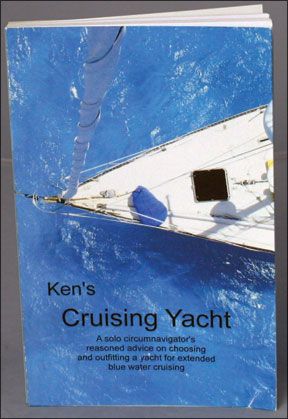
189
pressure-cooker recipes in your home galley with no stress…and no starboard heel. This book would make a great gift for any aspiring galley gourmet. (2007, Downwind Press, $25, www.gourmetunderway.com)
Ken’s Cruising Yacht
Ken Hellewell’s no-nonsense approach to cruising was born of his solo circumnavigation and his many years onboard his C&C 38, Topaz.
Hellewell is very straightforward, and his writing comes across as if he were simply offering another sailor advice over drinks on the dock or during a break at the boatyard. His tone reflects his “the decision is yours, but since you asked, here’s what I think and why” attitude.
The author discusses boat construction options, rigging, sails, ground tackle, galley, electronics, provisioning, navigation, and emergencies with the same energy and tone, as if providing a checklist for the do-it-yourself beginner and an affirmation of choices for the more-advanced sailor. (2008, Cevennes Productions, $20, www.
kenhellewell.com.)
The Annotated Sailing Alone Around the World
Capt. Joshua Slocum’s classic, “Sailing Alone Around the World,” has been revived and annotated by teacher/journalist Rod Scher. The new release has the bonuses of added commentary, clarification, and historic context to one of the greatest sea adventures of all times. Scher’s annotations provide the reader with a background and a second-voice perspective that makes Slocum’s original story all the more interesting and easier to put into perspective 115 years after the voyage.
Scher does not spare Slocum when it comes to historical
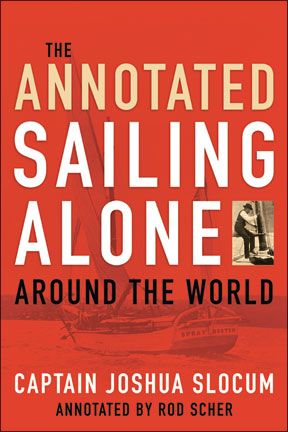
183
accuracy (noting Slocum was charged with several crimes and spent some time in jail), but he also brings Slocum’s self-effacing and irresistible humor to light, and drives home to the modern reader (for whom tales of solo circumnavigations have become commonplace) how utterly unique and absurd, in 1895, the very first solo circumnavigation must have seemed. History buffs and those inspired by Slocum’s tale will appreciate the added perspective the annotated version offers. (2009, Sheridan House Inc., $20, http://www.sheridanhouse.com/)
Ten Degrees of Reckoning
It takes a lot to recommend a story as devastating as Dr. Hester Rumberg’s “Ten Degrees of Reckoning: The True Story of a Family’s Love and the Will to Survive.” But the tragedy that befell the Sleavin family and the Melinda Lee is a story that needs telling.
Hit by a freight carrier off the coast of New Zealand the night before it was due to make landfall, the 47-foot Melinda Lee sank. Of the family cruiser’s four crew, only Judith Sleavin survived. Any parent, after reading how Judith lost her son instantly and then watched her daughter and husband die in the sea, may turn away from the cruising life forever. But Judith’s story is one of survival—physical and psychological—in the face of seemingly insurmountable odds. None of us knows
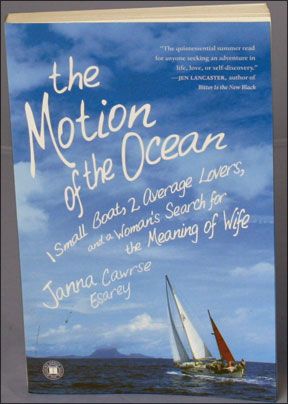
196
what fate awaits us, and the real reason to read this story is to understand the strength and fortitude it takes to truly live. (2007, Amy Einhorn Books, $25, http://www.penguin.com/.)
Red Water, Blue Water, Salt Water
In a humorous and hopeful tale of a family’s 2½ years at sea, Todd Scan’tlebury’s “Red Water, Blue Water, Salt Water: A Novel About Sailing Away As a Family” recalls the universal steep learning curve found at the beginnings of voyages.
Scan’tlebury tells of his adventures around the Caribbean and South America aboard the catamaran Manta Raya with his wife and daughters, and the lingering knowledge—six years after the cruise—that sailing connected his family in a special and permanent way. A light read, “Red Water, Blue Water, Salt Water” will appeal to those who’ve cruised as a family or one day hope to. (2008, published by Todd Scan’tlebury, $21, www.amazon.com)
The Motion of the Ocean



































